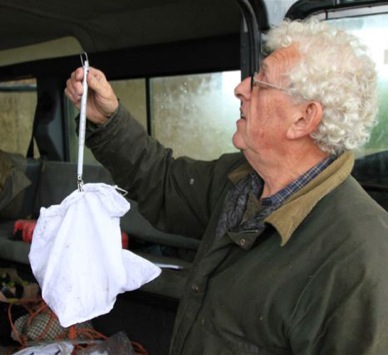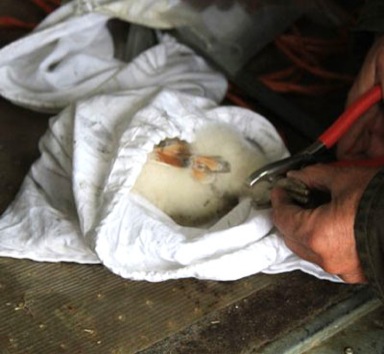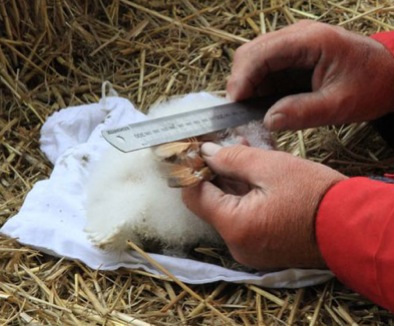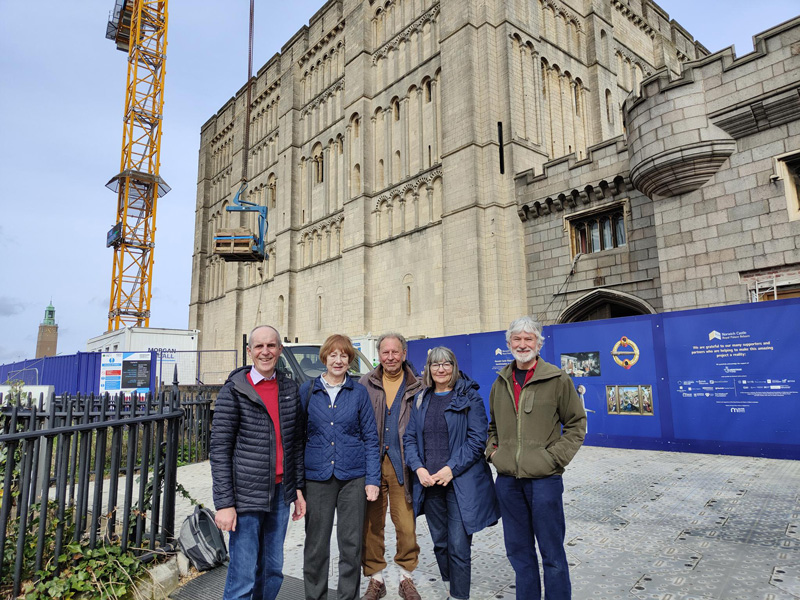 The details of this young pullis have been recorded as part of the 2012 survey
The details of this young pullis have been recorded as part of the 2012 survey
As you may know, our East Anglian Nest Box Scheme for wild owls and other birds of prey has progressively surveyed and then built, sited, erected and monitored a network of wild owl nesting boxes to replace the diminishing number of derelict barns, outbuildings and natural nesting cavities favoured by raptors in our Mid-Suffolk vicinity.
Earlier this year we were pleased to announce that we are beginning to amalgamate our efforts with another long-standing regional conservation group – The Thornham Owl Project – in order to strengthen, consolidate & extend the important work of providing safe & secure lodgings for wild birds of prey, especially those species which are under threat.
As winter approaches, Roger Buxton of The Thornham Owl Project reports on activity & findings during the past year – research which was carried out under the auspices of a mandatory Disturbance License issued by the Government in accordance with the Wildlife and Countryside Act 1981.
 The wild owl boxes are located in a variety of suitable locations
The wild owl boxes are located in a variety of suitable locations
BARN OWLS
Whilst nationally Barn Owl breeding activity has been very poor, in the Eastern region thankfully this trend has not been duplicated with good returns being reported on nest box usage and brood sizes. The Thornham Owl Project can report as having its most successful year to date with 97 pullis being subjected after ringing or banding to normal process of checking weight to establish condition and health followed by ageing.
 Safely secured in a soft muslin bag, the youngster is weighed …
Safely secured in a soft muslin bag, the youngster is weighed …
Ageing is carried out and determined by measuring the quill (pin) or emerged feather (unfurled) of the seventh primary and checked off against a graph. In early June when boxes were first checked they were yielding excellent returns with up to five pullis per box but results tailed off with one or two pullis per box when checking into late July and August, possibly attributed to the very cold and wet weather conditions which prevailed during June. Nevertheless an average return of 2.7 pullis per nest site or box was an excellent result and should boost Barn Owl population in the immediate area.
There was also a further 8 boxes identified as roost sites and 7 additional adults ringed, plus 5 re-traps. The re-trap ring numbers have been forwarded to the appropriate personnel who will establish and plot the movement of these birds. The project now has 166 Barn Owl boxes covering an area from South Norfolk to South Suffolk, mainly centering on the Waveney and Gipping valleys. However the project has and will continue to erect nest boxes in any suitable habitat if identified.
 … and carefully ringed for future tracking purposes
… and carefully ringed for future tracking purposes
TAWNY OWLS
The project currently has 48 nest boxes designed for this species of which 7 were used, producing 14 pullis. A further 4 boxes were used but these nests were abandoned, possibly due to harsh weather conditions prevailing at the wrong time. This was a disappointing result and down on last years figure of 17, though Tawny Owls continue to show an inclination for using the triangular boxes intended for Barn Owls.
LITTLE OWLS
Out of 26 nest boxes only one was used producing three pullis. There definitely appears to be reluctance for this species of Owl to use artificial sites, maybe attributed to the number of natural sites available for these smaller owls.
KESTRELS
In total the project has 36 Kestrel boxes and we had a reasonably successful year with 11 boxes being used to produce an average brood of 4, with some broods yielding up to 5 pullis, with all young fledging. (We also found Egyptian Geese had taken up residence in one of the boxes – a first for us.
Sadly there were some losses – 4 boxes had pullis on our first visit which were too small to ring, but on our second visit none were found, which we assumed to have been predated by either Squirrels and/or Buzzards.
Due to the prevailing weather in early summer the breeding for these birds was inconsistent, with in excess of four weeks difference between egg laying from one clutch to another.
OTHER INFORMATION
Stock Doves still regularly use the Barn Owl boxes with 37 birds being ringed or banded. Approximately one third of the world population for this species of bird breed here in the British Isles with some having the tendency to move South in the winter during an inclement cold period.
Other box residents include both Jackdaws and Squirrels.
The project continues to make and erect boxes in suitable habitat and is primarily run on a voluntary basis with the only income being derived from sponsorship of boxes by the general public, if you wish to help by sponsoring a box or you have suitable habitat for a nest box information can be obtained about the Thornham Owl Project by telephoning 01449 711788 .
During 2012 the project was centered at Thornham Magna with workshop and vehicle kindly being supplied by Mid Suffolk Council. However as of the end of year this facility will no longer be available and we will be based at The Suffolk Owl Sanctuary, Stonham Barns who will supply transport, workshops, storage and other facilities and with whom the project will run as a joint venture from 2013 onwards.









